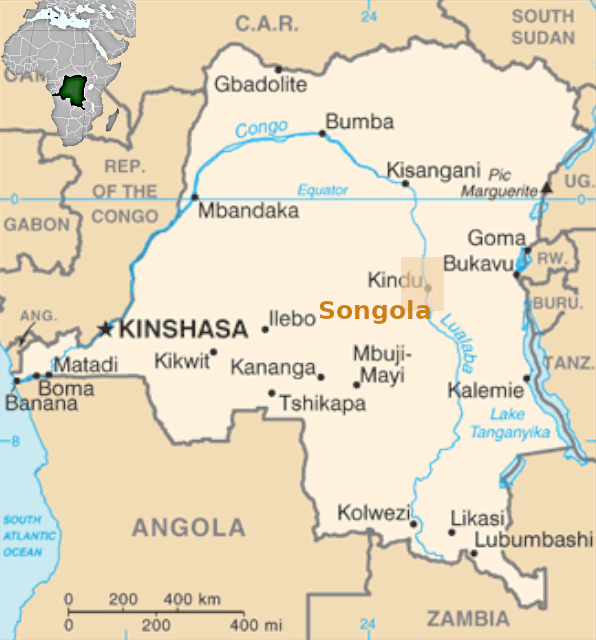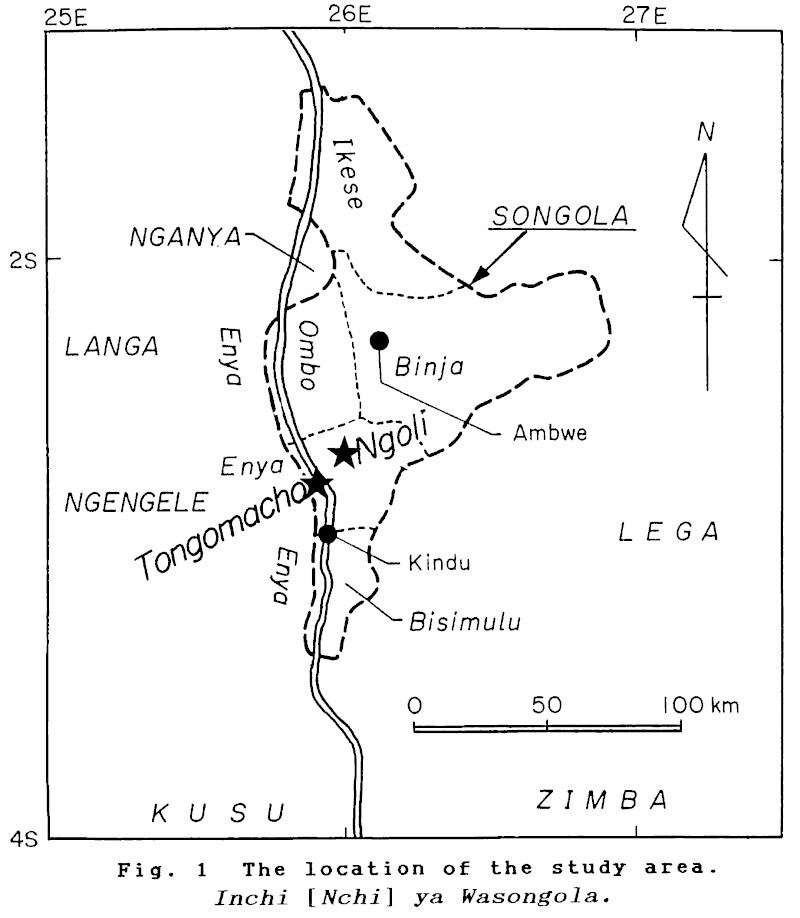Your search results [3 articles]
The Songola of the Congo River and their ferments (starter) for beer brewing.
The discovery of an unexpected brewing technique in the heart of Africa was highly unlikely. That was uncovered by Takako Ankei, a Japanese microbiologist-ethnologist, an even more unexpected fact. She came to study the feeding techniques of the Songola people who live on the upper Congo River and found in 1978-80 that they brew their cassava or rice beer using amylolytic ferments. These are cooked cassava/rice pellets on which certain strains of fungi are cultivated. Not just any fungi: mycelia that can transform all kinds of starch slurry into fermentable sugars. This is the preliminary and essential operation that Songola women undertake to brew beer. Once saccharified, the more or less liquid slurry ferments, a then child's play. In any case, the preparatory brewing tasks are critical and quite complex.
Firstly, it implies that the African brewing techniques are more diverse and complex than one might imagine. It was already known that Africa has developed the most multifarious brewing techniques: malting (sprouting) of grains (dolo and the like in West Africa, pombe in eastern Africa, umqombothi in Southern Africa, among many examples), sour brews (coupling lactic/alcoholic fermentations[1]), over-maturation of starchy fruits (plantain beers brewed in the Great Lakes area), insalivation of starchy tubers (yams as a brewing material before the introduction of cassava and sweet potato in the 16th century), or brewing with amylolytic plants (beer called munkoyo in Zambia). The 6th beer brewing method was then missing: the making of amylolytic ferments, or beer starter as it is known in English literature.
Takako Ankei's discovery also calls into question the idea that amylolytic ferments are a Far Asian speciality, a brewing method used exclusively in China, Japan and Southeast Asia. This technique is attested to elsewhere: in India very anciently (see a beer-ferment named kinva used before and after the Maurya empire 320-185 BC) and until today in northern India (Assam, Meghalaya, Nagaland, etc.) or among the peoples of the Himalayan foothills (Nepal, Sikkim, Bhutan, Uttar Pradesh) (see next page Significance of Takako Ankei's discovery). Brewing beer with amylolytic ferments is also practised in South America (Colombia, Guyana, the Caribbean). Africa must now be added to this long list. We can suspected the European exception to result from a lack of research on this topic.
This finding changes the world geography of beer. In her 1986 article, Takako Ankei does not fail to develop this historical aspect, and rightly so. The map she presents is a little out of date, but the central question is clearly stated.
Who are the Songola?
The Songola are a Bantu people composed of at least six subgroups, five of which are slash-and-burn cultivators of the equatorial forest, the rest practices riverine fishing on the Zaire River (Ankei, 1984). Kuko men (one the five cultivator subgroups) prepare the fields by felling trees that attain up to 40 meters. After burning is done by men, women do all other works as planting, weeding, and harvesting. The Kuko have more than 45 species of cultivated plants, among which cassava (30 cultivars), plantains (29 cultivars), rice (21 cultivars) are the most important (Ankei, 1981). Oil palm trees (3 cultivars) are planted in and outside the fields, and has an essential importance for the diet and the economic life of the Kuko subgroup.
| Introduction into Africa of some Songola food plants | ||
| Plants | Older date | Origin or region/diffusion route |
| Rice | ≈ 700 | Coasts of Eastern Africa. Trade routes with India and the Arab world. |
| Maize | ≈1550 | Royaume de Kongo (1591)[2] |
| Cassava | ≈ 1600 | North Loango Coast (1611-1612)[3] |
| Plantain bananas (Musa AAB) | ≈ 1000 BC | Asian cultivar package with taro (Colocasia esculenta (L.) Schott) & water-yam (Dioscorea alata L.) coming from Asia to Central and West Africa (Blench 2009, 376). |
| Oil palms (Elaeis guineensis JACQ.) | ≈ 2000 BC | Part of the agricultural package of the Bantu-speaking peoples in the Central Africa forest. Very ancient food use thought to have been brought from the today Cameroon around 2000 BC. |
The Songola call all the alcoholic beverages malu, which has the following indigenous varieties: a) malu mi ibilà, fermented sap of oil palm (ibilà, Elaeis guineensis), b) malu mi jbôndô, fermented sap of Raphia palm (îbôndô, Raphia sp.), c) kuku, sugarcane juice fermented with 15 % volume of fermented palm sap as starter. Varieties a) and b) are called malu mi màânjj, (literally "liquor of water"). These palm wines are very popular whereas the sugarcane wine is no longer consumed. Beside these fermented beverages which can be categorized as wines, the Songola brew their beers with unhusked rice (mùfùngà), maize (ìsàngû), and cassava (môsôngy) depending on the available tubers or grain. These are often mixed together for the same brew, but not prepared with the same process.
Remarks :
- Of the 6 Songola sub-groups, 5 are slash-and-burn farmers. This technique is presented as archaic or reserved for the dense forest areas of the planet. However, it is the Songola and neighbouring peoples who have mastered one of the most sophisticated brewing techniques.
- Rice arrived in Central Africa around the 8th-9th centuries. Is the amylolytic ferment technique related to the new rice cultivation? Difficult to answer. Mrs Ankei tries to make some deductions based on the technical constraints of brewing beer. However, the historical data were lacking in the 1980s, and still are today.
- The history of these beers brewed with amylolytic ferments is non-existent. It is not known how old they are. The multiplicity of alcoholic beverages of the Songola (palm wines, beers, distilled spirits) attest to an elaborate technical tradition. However, amylolytic ferments could have been introduced from the east coast of Africa by people of Indian (not Japanese!) origin. Ankei argues for an African origin of this technique. She suggests that it originated on the east coast of Africa and was later adopted by the peoples of the Congolese forest (Ankei 1986, 45-46).
- The archaeological research on the birth of agricultural practices of the Bantu-speaking peoples will perhaps provide answers if the projects integrate the analysis of pottery, possible receptacles of fermented starch (Crowther & al. 2017).
[1] This type of beer brewing occurs in African regions where pastoralists and cultivators meet and where these specialised populations have to cooperate. For example the Peuls and the farmers along the Niger bassin, the northern herders and the southern farmers stretching between Darfur and Lake Chad, or the herders-farmers cooperating in inland territories from Kenya to Tanzania and most often defending from the slave-hunting undertaken by the swahili trading states.
[2] The earliest mention of maize in the Kongo kingdom, written by Pigafetta in 1591, relates the stay of Duarte Lopes between 1570 and 1583. An earlier Jesuit account from 1548 does not mention it (Vansina 1962 : 387) (Bahuchet, Philippson (1998), Les plantes d'origine américaine en Afrique bantoue. Une approche linguistique, 4).
[3] Around 1620, Bras Correa indicates that mandioca has been planted there as in Brazil 'for a few years'. Samuel Brun discovered cassava on the northern coast of Loango, in Mayomba (1611-1612).





 and Bantu dispersal from Nigeria-Cameroon to southern Africa.jpg)